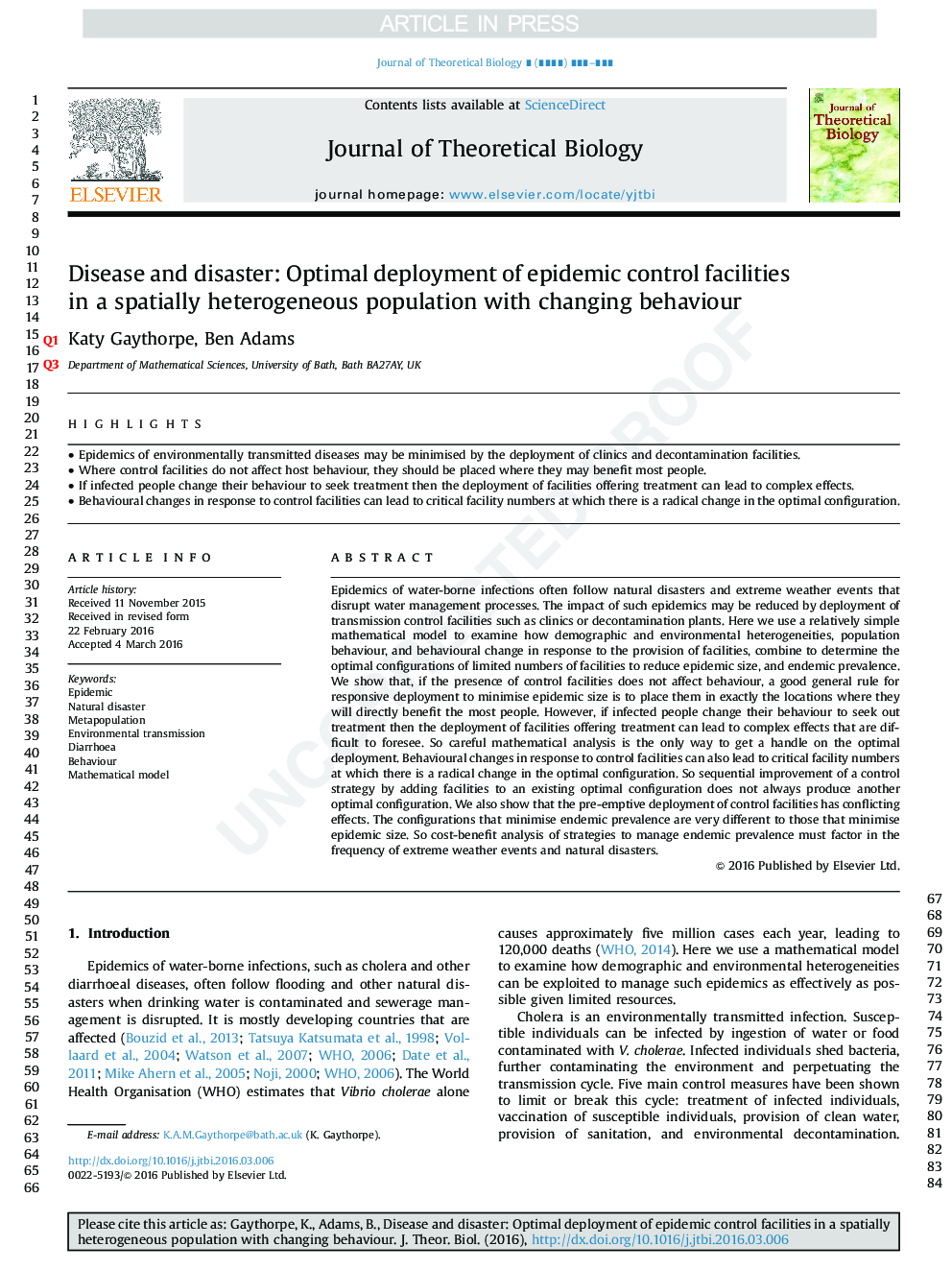| Article ID | Journal | Published Year | Pages | File Type |
|---|---|---|---|---|
| 6369278 | Journal of Theoretical Biology | 2016 | 10 Pages |
Abstract
Epidemics of water-borne infections often follow natural disasters and extreme weather events that disrupt water management processes. The impact of such epidemics may be reduced by deployment of transmission control facilities such as clinics or decontamination plants. Here we use a relatively simple mathematical model to examine how demographic and environmental heterogeneities, population behaviour, and behavioural change in response to the provision of facilities, combine to determine the optimal configurations of limited numbers of facilities to reduce epidemic size, and endemic prevalence. We show that, if the presence of control facilities does not affect behaviour, a good general rule for responsive deployment to minimise epidemic size is to place them in exactly the locations where they will directly benefit the most people. However, if infected people change their behaviour to seek out treatment then the deployment of facilities offering treatment can lead to complex effects that are difficult to foresee. So careful mathematical analysis is the only way to get a handle on the optimal deployment. Behavioural changes in response to control facilities can also lead to critical facility numbers at which there is a radical change in the optimal configuration. So sequential improvement of a control strategy by adding facilities to an existing optimal configuration does not always produce another optimal configuration. We also show that the pre-emptive deployment of control facilities has conflicting effects. The configurations that minimise endemic prevalence are very different to those that minimise epidemic size. So cost-benefit analysis of strategies to manage endemic prevalence must factor in the frequency of extreme weather events and natural disasters.
Keywords
Related Topics
Life Sciences
Agricultural and Biological Sciences
Agricultural and Biological Sciences (General)
Authors
Katy Gaythorpe, Ben Adams,
